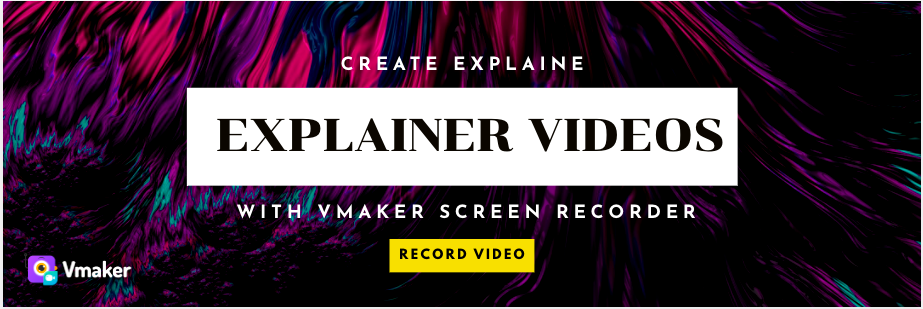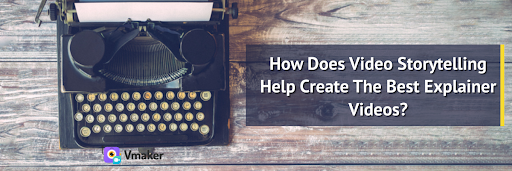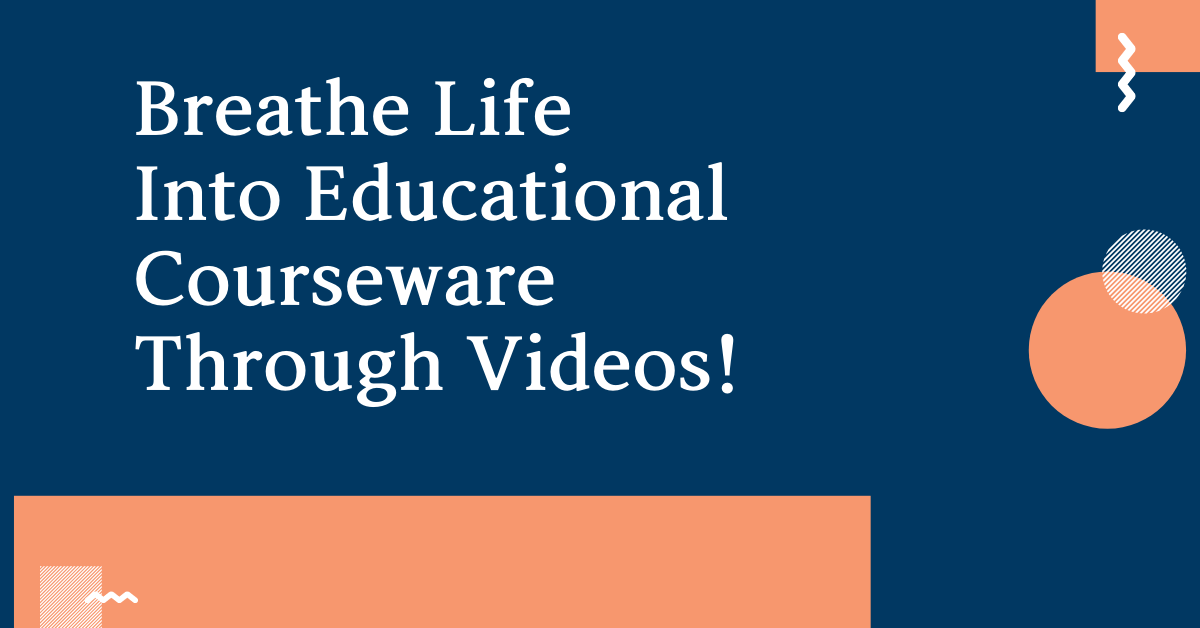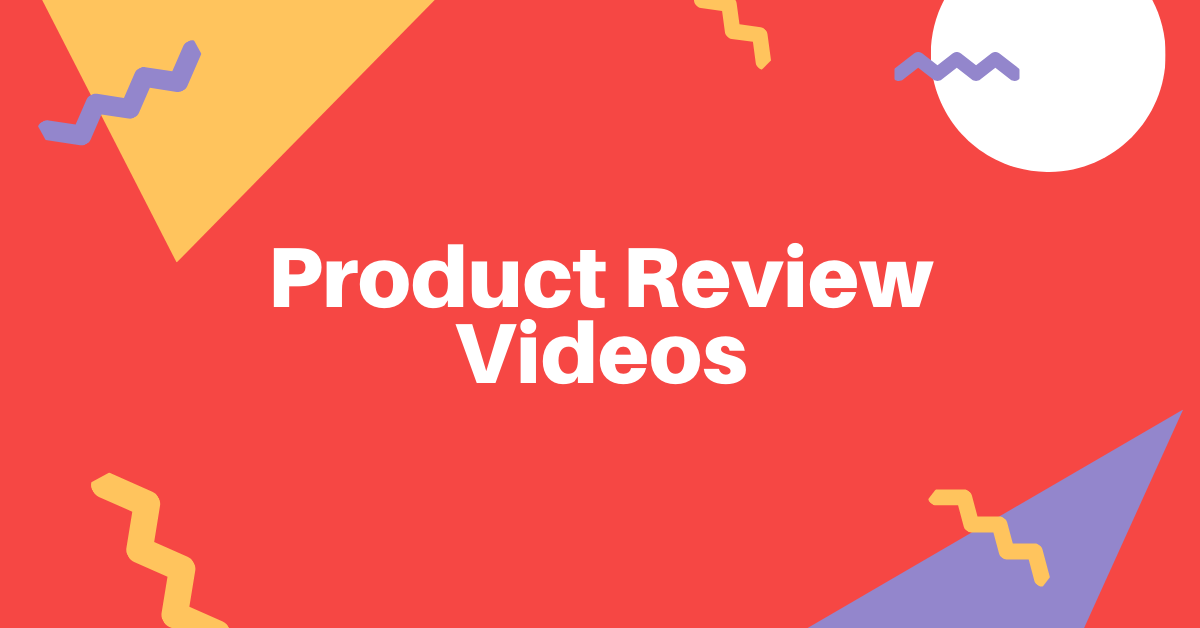Contents
Storytelling with a video prefix
Different types of explainer videos
Why do a lot of explainer videos fail to do well and reach the desired goals?
Crafting a great story for a video
How Does Video Storytelling Help Create The Best Explainer Videos?
The amount of new information in the world is growing exponentially every day, and in the flow of this noise, long texts and standard static presentations have lost their reputation as high-quality marketing tools for telling the brand’s story. The cutting-edge solution - mashing up the storytelling and the video - has taken roots in markers' imagination.
Although it is generally accepted to label storytelling exclusively to the written posts in social media, the skill of package thoughts creatively and deliver them to the interlocutors can be a lifesaver for every niche. For example, speaking in terms of employability, professional CV writers stress the importance of the attached video to the written part. So, if the art of creating a story is still all Greek to you, then check out the article!
Storytelling with a video prefix
Today storytelling is a commonly used buzzword in the business world that can be traced back to an ancient mastery of delivering information via stories, tales, and sagas. Can you recall the motherland of eloquence science? Of course, we are talking about Ancient Greece. The greatest speakers of those times, Plato, Socrates, or Cicero pursued a single goal - to leave a lasting impression on the audience, more specifically, to trigger emotions to provoke the action.
For marketers, such a simple trick of gaining the trust of the target audience is pure gold and it is hard not to take advantage of it. As might be expected, the art of a gripping narrative didn’t stay still, by regularly adapting to the new trends, it has been changed beyond recognition. So, today we are talking about storytelling with the video prefix.
Explainer videos
A significant role in such a metamorphosis played video marketing - a new marketing area for promoting business via the internet using video content, which currently is taking shape in the online environment. The explainer video is just one instrument from the rich video marketing toolkit, but, according to the Databox report, 74% of marketers are convinced that video content has much more converting potential than blog posts.
To put it simply, an explainer video is an informative film, usually less than 5 minutes in length, describing what the company is doing or how the product works. This is not an ordinary tutorial, but rather a persuasive marketing message. It draws attention to the viewer's pain points and explains how an offered product or process can become a solution. Sometimes these are animated videos, but a simple form when a person speaks to the camera is also possible.
A good explainer video is:
- short;
- understandable and easy to remember;
- personal and inspiring;
- consistent with the brand's characteristics;
- answering what the business was created;
- suitable for the target audience;
- as high quality as it could be done
A good explainer video primarily tells a good story. On the one hand, this is an explanation, but on the other, this is the beginning of the viewer's journey to your brand. After watching it, the viewer should be interested, imbued, and concerned with the content. Basically, there must be no place for indifference.
Screen recorders, animated videos, or live videos - which one is the best to create explainer videos?
Some people think that creating even a small video for a business is prohibitively expensive. They might have had a bad experience though, as this is not necessarily the case. You just need to scrutinize the available options as currently there are various types of explainer videos, and some of them can be made with affordable hardware and an explainer video maker.
Different types of explainer videos
Screen recorded explainer videos
The vast majority of internet users have experienced this kind of explainer video, whether during tutorials or online classes. In marketing, it is a powerful tool as well. After all, what can be simpler than just sitting down in front of the screen and recording it? Shooting some processes on the computer screen, you can either add a voiceover or use minimal animation to the video, which allows viewers to watch it even in silent mode without missing the point.
Although it is not the most enthralling way to tell about the product, many companies use such promo videos to provide a visual demonstration of how the product can improve your life. In other words, if flawless functionality is the keystone to the sales of your product, then this type of video will suit you just perfectly.

Animation explainer videos
This broad explainer video category includes 2D and 3D, motion graphics, hand-drawn art, kinetic typography, and puppet animation. Videos are composed of moving graphics, music, typography, and voice-overs. Animated explainer videos help businesses acquire a friendly, gaudy face. They can make serious (like traffic) and dry (e.g. finance) topics fun and a little easier to grasp.
Hand-drawn and typographic animation also breaks complex themes into engaging moments. The problem is - this type of video usually has the highest production cost, even with simple animation. There are simple programs where videos are created by simply dragging and dropping elements with the mouse. Although in such a case, you need to realistically assess the quality obtained. It's no coincidence that professional animation costs a lot of money. That's where videos with real people come in.
Explainer videos with real people/actors
One of the major assets of such a film is that it can be cheap and cheerful, as the budget depends on your goal. If you want something similar to a TV commercial, know that it will take a ton of equipment, a large team, and a lot of money. If you want something similar to a TV commercial, get ready to spend lavishly on overpriced equipment and a large team. But don't underestimate the powerful effect a business owner can have by simply speaking honestly to the viewer.
Thus, you will have the most widespread kind of explainer videos - the one with a business owner in the title role, who explains the essence of the product/service to the camera. These videos introduce the audience to the people behind the brand. It is a great way to create a first impression if your company is still unknown or it is just getting ready to launch.
Enlight your audience with your personal story or brand's mission to gain trust and create an indeed strong connection. This will be much cheaper. While having a low production cost, such a video gives a sense of sincerity and individuality which makes it more profitable and efficient.
Why do a lot of explainer videos fail to do well and reach the desired goals?
The crux of the problem with the explainer video is usually in its construction. Video production consists of 3 steps:
- Diagnosis of meanings
- Narrative creation
- Visualization
The first step is basic awareness of the brand's core message - what meaning about your product do you want to convey to the target audience? The last step is analogically cut and clear as there exist at least 3 options for visualizing the message. The hardest thing to accomplish is the story itself. It is the story that should absorb the target audience, induce reflection, inspire confidence and subsequently convince potential customers to make a purchase.
Even though the video is itself the most easily manageable and emotionally intense type of content, it would be nothing without an epic story in the back. Taking it's the basis of every narration and the cherry on top of every content, the process of crafting the video story demands particular attention. So, where does the magic of stories derive from? The cause lies in neurology and psychology.
Neuroscience professor Uri Hasson and his team at Princeton University have researched to find out what exactly happens in a person's brain when they listen to or tell a story. They found that when two people engage in this kind of interaction, they both exhibit the same response patterns in multiple brain structures.
Storytelling is not a passive process, but an experience that, if successful, can put the listener and the narrator on the same wavelength. However, if the story is the zest of every video, then the plot is the heart and soul of every story. So, let’s take a closer look at the mastery of crafting a story.
Crafting a great story for a video
To create a great video story it takes several components to consider: heroes, conflicts, and the world around them.
Come up with an idea
The jumping-off point for any story is an idea that lies behind it. A strong idea is a glue that pulls all parts of the narration together and the core message communicated to the audience. It is supposed to be short, but also a comprehensive thesis that will be stuck in people’s heads for a long time. Let’s take a closer look at a couple of iconic messages from movies and books:
True love is immortal - “Titanic”
A friend in need is a friend indeed - “Friends”
You become responsible forever for what you’ve tamed - “The little Prince”
Strong ideas are not necessarily positive and life-affirming. For example, the cult series "House M.D." keeps on the idea that all people are lying.
Know your listeners
The secret of creating an appealing story is in familiarizing yourself with your viewers as the best stories in the world are universal and captivate people of any sex and age. It’s always better to bear in mind an ultimate list of questions about core interests, dreams, and plans to help you recreate a typical representative of your target audience, aka persona. Disney and Pixar use the same approach in their productions. They indulge us with stories, where the values are shared by the vast majority of people which makes them understandable in every language.
Create a character
The storytelling just can’t exist without a character as he is its driving force. This is a figure through which the audience plunges deeper and deeper into the story. There are two popular and effective ways to come up with an offbeat character. The first one is about imagining that you are stuck with him in the elevator and the second one is about mentally getting an interview with him.
The thing is that a good protagonist is like a real human being - he consists of both advantages and disadvantages and his appearance is easy to recognize. For example, one of the most charismatic figures of the “Pirates of the Caribbean '', Captain Jack the Sparrow, was initially presumed as a minor character. Thanks to Johnny Depp, who adapted for that role striking features and habits of Rolling Stone’s guitarist Keith Richards, Jack Sparrow’s story became the spotlight of the movie.
Understand the needs of the hero
The hero’s heart’s desires and cravings help to form his character and understand the motivation. It is the motivation of the hero that allows him to move forward, it is fuel for storytelling. A simple question "What does the hero want?" will push you forward in practice. For warming up trying to put the same question to the worldly know characters:
What does Jack Sparrow want? - to return the Black pearl
What does Peter Pan want? - to never get older
What does James Bond want? - to defeat the villains
Create the universe
Once you’re done with the idea, the hero, and his needs you can craft the reality where the action unfolds. The world is the entire environment of the hero, a set of rules and restrictions we are guided by in this story. To make the pace rapid it would be useful to ask yourself a question starting with “What if...” and don’t be afraid of eccentric answers springing to your mind.
Mind the structure of the explainer video
The structure is a summary of what’s going on with the character's fate in the world. We all use the structure when we want to retell the events or content of books and films. The structure helps to bring order into history and turn the storytelling into a complete piece. Most often, when talking about the structure of the plot, you can find the term of a three-part structure.
In a few words, it is the beginning, the middle, and the end of the story. The first part consists of the introduction and the beginning of a story, all the core events usually are in the second part and the third part presents the results and conclusions of the previous events. Pixar Studio Cartoon Creators recommend using the expanded version of the three-part structure:
Once upon a time, ...
Every day ...
Until once (...) has happened ...
As a result,...
And finally, …
And ever since, …
The moral of the story - ...
If you fulfill the above-mentioned sentences with the hero’s actions, you will create an interesting structure for video storytelling, in which the action will develop exponentially, and will lead to the climax and interesting junction in the end. If it is a true story, Linkedin expert recommends to use a simpler “journalistic structure” - the method of five "w":
What happened?
Who did it?
When did it happen?
Where did it happen?
Why did it happen?
To create the structure of the video story, you can also use the ready-made templates of the journalist Christopher Booker, who highlighted 7 main plots that have been migrating from one great story to another for centuries:
Overcoming the monster - these are the stories about fighting back against adversity no matter how severe the difficulties are. Overcoming the monsters teaches us to achieve goals and not to be afraid of defeat. This type of plot was used in “Avatar” and “The Star Wars”.
From rags to riches - these are the plots about the formation of great personalities and stories of unexpected luck, for instance, a well-known Cinderella or “The Wolf of Wall Street” would be excellent examples.
Transformation - this is the story of the transformation of a negative hero into a positive one. A great example is the cartoon "Despicable Me".
Travelling and homecoming - in these stories, the heroes find themselves in new worlds where they get challenged by various difficulties and try to find their way home. “Alice in Wonderland” and “The Wizard of Oz” display such a plot just perfectly.
Adventures - in this type of story, the hero goes through a quest, overcoming various obstacles and temptations on the way to the goal. This is the story of Frodo from “The Lord of the Rings” as well as the stories of all the main characters from “Game of Thrones”.
Comedy - it's usually an easy and light-hearted story based on misunderstandings and nonsense that ends well. This format is great for telling romantic stories and small cases. Examples are the TV series “The Big Bang Theory” and “Friends”.
- Create the opening
The opening or the initiating scene is the moment in the story that throws the character out of balance and forces him to act. Quite often, it’s some kind of unexpected and unpleasant event, for example, a car breakdown on the eve of a trip or the loss of keys on the way home.
- Find the conflict
If you ask any writer about what storytelling is, they immediately start talking about conflict. Conflict is the main contradiction that the hero faces, and it prevents him from achieving the desired goal. Playwrights distinguish three main types of conflict:
character vs society - it is storytelling about the contrast of characters, values, and ideas
character vs himself - in internal conflicts, the hero struggles with seemingly insoluble contradictions within himself
character vs forces of nature - it is the basis of almost all films about the apocalypse and space sagas
- Create the obstacles
After the opening scene, it's high time to make your characters work cut out for their goal. Thanks to the obstacles we reveal the core features of the protagonist. Obstacle courses are not necessarily a big and difficult genre. Sometimes such stories can be told in a couple of minutes. For example, in the music video of the Blur band, a package of milk is looking for one of the band members. Along the way, it faces various dangers, falls in love, and survives a couple of tragedies.
- Create the climax
All obstacles lead the hero to the climax of the story - a major decision or event that changes everything. It can be victory over the villain in the final battle, the realization of the true feelings, remedy from a curse, or returning home. Storytelling at its climax should be emotional and engaging because this is what the audience has been waiting for from the very beginning. It answers the main question “How will it work out in the end?”. For example, in the commercial video story "Train de Nuit" for Chanel 5, Audrey Tautou's character tries to meet a stranger from the train, and at the climax he finds her.
- And finally the ending
The end of the story is not only about resolving all conflicts and bringing the logical conclusion of the story, it is also the way to show up the lessons which the characters learned in the process. The main rule of a good ending in storytelling is to make it logical and based on the actions of the characters.
Video story should be told from the bottom of your heart
As corny as it may sound, but it's the stories based on our personal experience that win the hearts of the audience. It is not a secret that many directors, screenwriters, and writers have found inspiration for their masterpieces in events from childhood, their everyday life, and sometimes from the books and films which authors hold dear. In this setting it is important to highlight the courage to experiment - do not box yourself up in rigid formats of the past, but quite opposite, speak from your heart and let the world hear you.
Most essentially, remember, if the story turns out to be interesting, then the goal has been achieved!

If you enjoyed reading the above article, then here are a few cherry-picked ones for you to read further!
A Complete Guide On Product Videos ~ Definition, Types and Tips
Ultimate Tutorial videos Guide with Tips and Free Template
Ultimate How-to Video Guide with Examples, Tips, and Ideas



